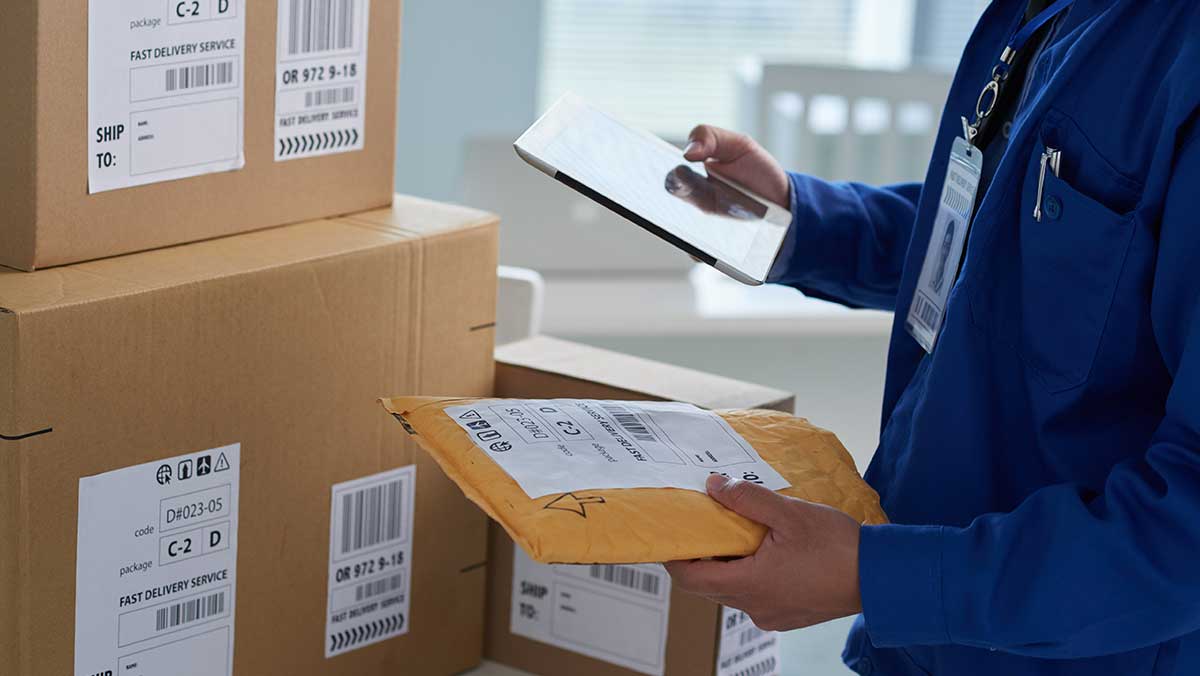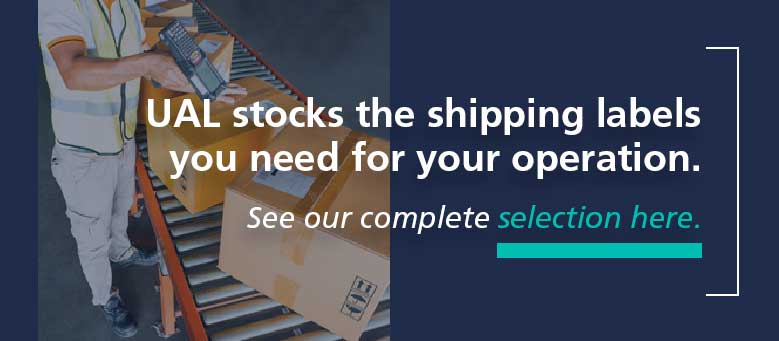In 2021, over 159 billion packages shipped worldwide. And for many of those shipments, you could go online and track the location of your package from pick up to drop off at your home or business. But it isn’t just GPS or a carrier's internal freight management system that enables this visibility. It also demands a shipping label to guide the package to the end destination. Regardless of how many packages you ship each month, it’s essential to create shipping labels that ensure your package arrives safely and timely at its intended destination.
What Are Shipping Labels?
Shipping labels provide the information UPS, FedEx, Amazon, USPS or any freight carrier needs to route your package to the proper destination. Without one, it’s impossible to sort, ship, track and deliver a package.
Why Shipping Labels Are Needed
Although packages may get damaged or break in some way, with the tracking and delivery systems carriers have built over the past few decades, it’s rare for one that contains shipping information to disappear. But what does happen with regularity are orphaned packages that are missing a shipping label or forward or return address information. Without a shipping label, it’s highly unlikely a package will reach its intended destination.
Types of Shipping Labels
Shipping labels do more than guide the delivery location. They also inform package handlers and recipients about the contents of the package and special handling instructions or other precautions they should take. For example,
Fragile Labels
Fragile labels ensure shippers know the contents of a package are delicate and need to be handled with special care to avoid damage and delays.
Hazardous Material Labels
The Department of Transportation (DOT) publishes a lengthy list of hazardous materials. Although some chemicals like fuel seem obvious, others like perfumes and colognes don’t. But there is a common thread with all the items on the DOT list, they all require hazardous material labels to ensure the shipment is handled so that spills, accidents and exposure are prevented.
Warning Labels
Items, like sensitive medical supplies, some biologics, frozen products and more require dry ice for safe shipment. When materials are shipped in dry ice, they must carry a warning label.
Transportation Labels
Bottles, liquids, appliances, consumer electronics and more must be shipped in an upright position. Transportation labels guide proper handling from shipment to the end destination.
Priority Handling Labels
Some packages require immediate attention upon arrival. Priority handling labels communicate the required next step.
Temperature Monitoring Labels
Maintaining specific temperature levels is essential for medicines, vaccines, food products and more. WarmMark temperature indicating labels allow you to ensure that temperature ranges have been maintained.
How to Create A Label For Shipping
Although there are numerous carriers you can use to ship your product, the shipping label requirements are similar. For example, 4” x 6” (4 inches wide and 6 inches long) is the common size carriers including UPS, FedEx, USPS, Amazon and more recommend, although larger sizes are acceptable. In addition, if you use Shopify or Etsy, their shipping apps connect to UPS, FedEx, USPS, DHL and Canada Post. DHL and Canada Post also use the standard size 4” x 6” shipping label.
The 4” x 6” size provides the space necessary for shipping information, including a scannable barcode, so the carrier can deliver it to the end destination.
Once the shipping label is printed with complete sender and delivery information, affixing it to the carton is the next step. Place it on the biggest surface of the box after it has been sealed to ensure that no tape covers the label and barcode. Also avoid putting the label on seams, closures, or on top of the sealing tape.
Less-Than-Truckload (LTL) Shipments
Packages for LTL shipments are typically placed on a pallet and shrink-wrapped to ensure the cartons are secure before the pallet is loaded on a truck. Similar to small package carriers, a 4” x 6” label size is common for LTL shipments.
As for placement, carriers recommend a shipping label on each package contained on the pallet. In addition, some freight companies suggest adding a shipping label to all four sides of the pallet once it has been shrink-wrapped.
Lastly, the durability of shipping labels is an important consideration. The heat within the trailer or in a warehouse in summer months and below zero temperatures when it’s cold can cause labels to fail. Using the right materials that perform in a wide range of temperatures, such as paper labels with permanent adhesives, is an important consideration. Plus, when reusing boxes and cartons, blockout labels, with an extra permanent adhesive, ensure the information you’re covering remains concealed.
Why You Might Need A Custom Shipping Label
Packages often serve as another way to make your brand stand out. Some companies use custom shipping labels that include logos, colors and designs that complement the brand image. In addition, using a linerless material is cost effective and reduces waste while maintaining the reliability needed to withstand hot and cold temperature extremes. The UAL Custom Label Designer is one tool you can use to design, price and order custom shipping labels.
Shipping Labels at United Ad Label
Regardless of how many packages you ship each day, United Ad Label stocks dozens of different shipping labels that meet the needs of companies large and small. And if you need a custom product, our Custom Label Designer makes it easy to design, price and order the exact label you need online. Contact us for more information.

